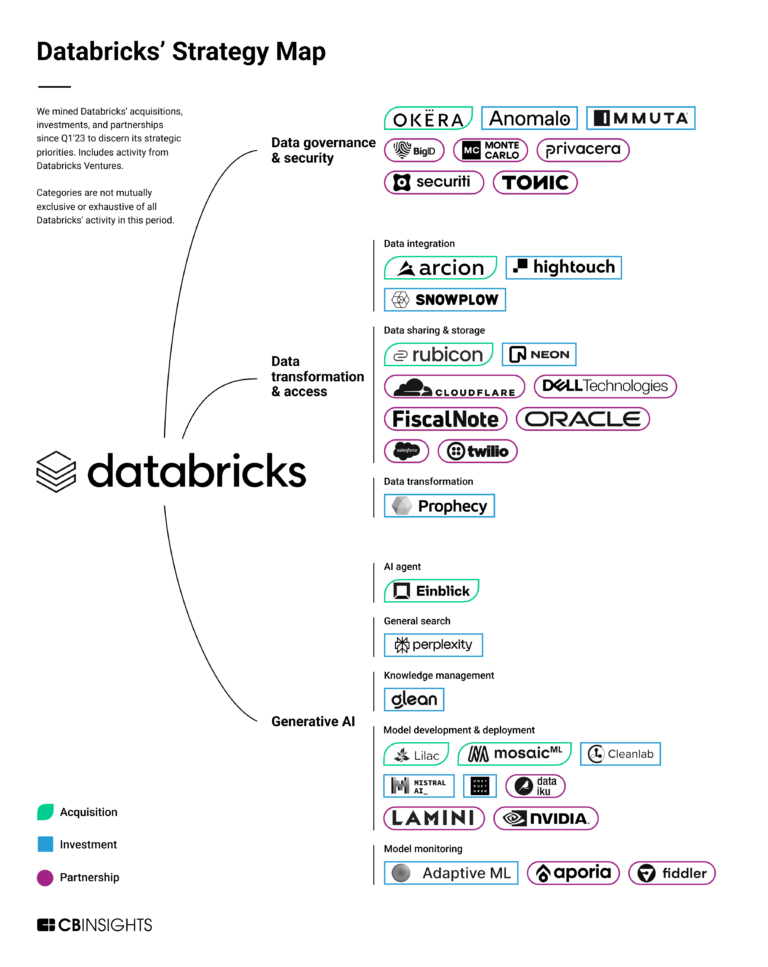
Neon
Founded Year
2021Stage
Acquired | AcquiredTotal Raised
$101.6MValuation
$0000About Neon
Neon offers a serverless PostgreSQL platform featuring a database that includes autoscaling, automatic instance sizing, connection pooling for thousands of connections, and instant point-in-time recovery, all built on a copy-on-write storage architecture. It serves various sectors with solutions for Software as a Service (SaaS) applications, serverless applications, and development and testing environments. Neon was founded in 2021 and is based in San Francisco, California. In May 2025, Databricks acquired it.
Loading...
Loading...
Research containing Neon
Get data-driven expert analysis from the CB Insights Intelligence Unit.
CB Insights Intelligence Analysts have mentioned Neon in 1 CB Insights research brief, most recently on Apr 19, 2024.
Expert Collections containing Neon
Expert Collections are analyst-curated lists that highlight the companies you need to know in the most important technology spaces.
Neon is included in 1 Expert Collection, including Artificial Intelligence.
Artificial Intelligence
10,402 items
Latest Neon News
Jun 23, 2025
SHARE Powering AI at scale requires an infrastructure that can rapidly unlock the value of data. This is leading to a world where data lakes and graph databases are becoming valuable tools for driving analytic workloads. Philip Rathle at Neo4j, Tanya Bragin at ClickHouse and Nikita Shamgunov at Neon talk with theCUBE about analytic workloads. As this infrastructure matures, connectivity will be key, according to Nikita Shamgunov (pictured, right), chief executive officer at Neon Inc. “My observation is that there are three separate worlds,” he said. “One is the lakes for data and analytics. The other one is online transaction processing, and we tend to think about OLTP as databases powering financial transactions like those big systems, and then the world of applications. All of them are connecting and they’re connecting to drive businesses and enable AI. Every application still needs a database.” Shamgunov spoke with theCUBE’s John Furrier and Dave Vellante at theCUBE + NYSE Wired: Robotics & AI Infrastructure Leaders 2025 event, during an exclusive broadcast on theCUBE, SiliconANGLE Media’s livestreaming studio. He was joined by Tanya Bragin (center), vice president of product at ClickHouse Inc., and Philip Rathle (left), chief technology officer at Neo4j Inc., and they discussed the latest trends in application development and data lake architecture. Unification layer for analytic workloads The cost to build applications has fallen significantly, attributable to services offered by platforms such as Replit , Lovable and Bolt , according to Shamgunov. These are enabling vibe coding as a natural language interface with AI for application development, setting the stage for a unification layer that can drive velocity. “Now we have high velocity application development that is nothing that we’ve seen before,” Shamgunov said. “As those applications are getting more sophisticated, now we need that connectivity with the applications and application platform. You need an OLTP database to power the application, and then you need to have all the telemetry, observability and fundamental data to complete that cycle. I think we see an acceleration in the unification of all those three.” What role will the database market play in providing that unification layer? Rathle believes that a graph database management system can be a major factor in providing the connective tissue necessary for application deployment, as seen in a use case involving the Swedish fintech Klarna Group PLC . “Every AI application needs not only LLMs, not only vectors, but access to the real-time web and an enterprise knowledge graph that’s built with the database that’s designed from the ground up effectively for graphs,” Rathle said. “The biggest illustration I have for this is Klarna, who are known for those of us in enterprise AI circles. This application that they built homegrown provides intelligence for their employees, allowed them to unplug 1,200 SaaS apps from Salesforce to Workday by repatriating data from all the different silos into a connective tissue.” Industry practitioners are also seeing unification within data lake architecture. As data-driven analytical applications become more common, the open-source database management system ClickHouse is seeing combined support for observability and business intelligence, according to Bragin. “What’s interesting to me is that what we’re also seeing in an evolution of a single unified architecture for a data lake, not only for data warehousing and traditional BI, but also for observability,” Bragin noted. “Traditionally these stacks have been very separate … because historically it’s been two very different vertically integrated commercial tools, say Splunk for logging on the observability side and Oracle on the BI side. Now if you look at players in this space, both open source and commercial, everything is on top of object store, everything is evolving to open data lakes absolutely as a unifying layer.” Photo: SiliconANGLE
Neon Frequently Asked Questions (FAQ)
When was Neon founded?
Neon was founded in 2021.
Where is Neon's headquarters?
Neon's headquarters is located at 2261 Market Street, San Francisco.
What is Neon's latest funding round?
Neon's latest funding round is Acquired.
How much did Neon raise?
Neon raised a total of $101.6M.
Who are the investors of Neon?
Investors of Neon include Databricks, Abstract, Notable Capital, General Catalyst, Menlo Ventures and 10 more.
Who are Neon's competitors?
Competitors of Neon include Crunchy Data, DataStax, Aerospike, Pathway, Akhetonics and 7 more.
Loading...
Compare Neon to Competitors

Weaviate is a company that develops artificial intelligence (AI)-native databases within the technology sector. The company provides a cloud-native, open-source vector database to support AI applications. Weaviate's offerings include vector similarity search, hybrid search, and tools for retrieval-augmented generation and feedback loops. Weaviate was formerly known as SeMi Technologies. It was founded in 2019 and is based in Amsterdam, Netherlands.

Supabase is an open-source backend as a service company that provides a suite of tools for developers, including a Postgres database, authentication, instant Application Programming Interfaces (APIs), Edge Functions, real-time subscriptions, storage, and vector embeddings. Supabase serves the technology sector, focusing on developers seeking backend solutions. It was founded in 2020 and is based in San Francisco, California.
Milvus is an open-source vector database designed for GenAI applications within the technology sector. The database supports searches and can handle large volumes of vectors, suitable for machine learning and deep learning tasks. Milvus serves sectors that require data retrieval and management solutions, such as artificial intelligence and machine learning industries. It was founded in 2019 and is based in Redwood City, California.
Vespa specializes in data processing and search solutions within the AI and big data sectors. The company offers an open-source search engine and vector database that enables querying, organizing, and inferring over large-scale structured, text, and vector data with low latency. Vespa primarily serves sectors that require scalable search solutions, personalized recommendation systems, and semi-structured data navigation, such as e-commerce and online services. It was founded in 2023 and is based in Trondheim, Norway.

Pinecone specializes in vector databases for artificial intelligence applications within the technology sector. The company offers a serverless vector database that enables low-latency search and management of vector embeddings for a variety of AI-driven applications. Pinecone's solutions cater to businesses that require scalable and efficient data retrieval capabilities for applications such as recommendation systems, anomaly detection, and semantic search. Pinecone was formerly known as HyperCube. It was founded in 2019 and is based in New York, New York.

ApertureData operates within the data management infrastructure domains. The company's offerings include a database for multimodal AI that integrates vector search and knowledge graph capabilities for AI application development and data management. ApertureData serves sectors that require AI applications, including generative AI, recommendation systems, and visual data analytics. It was founded in 2018 and is based in Los Gatos, California.
Loading...

